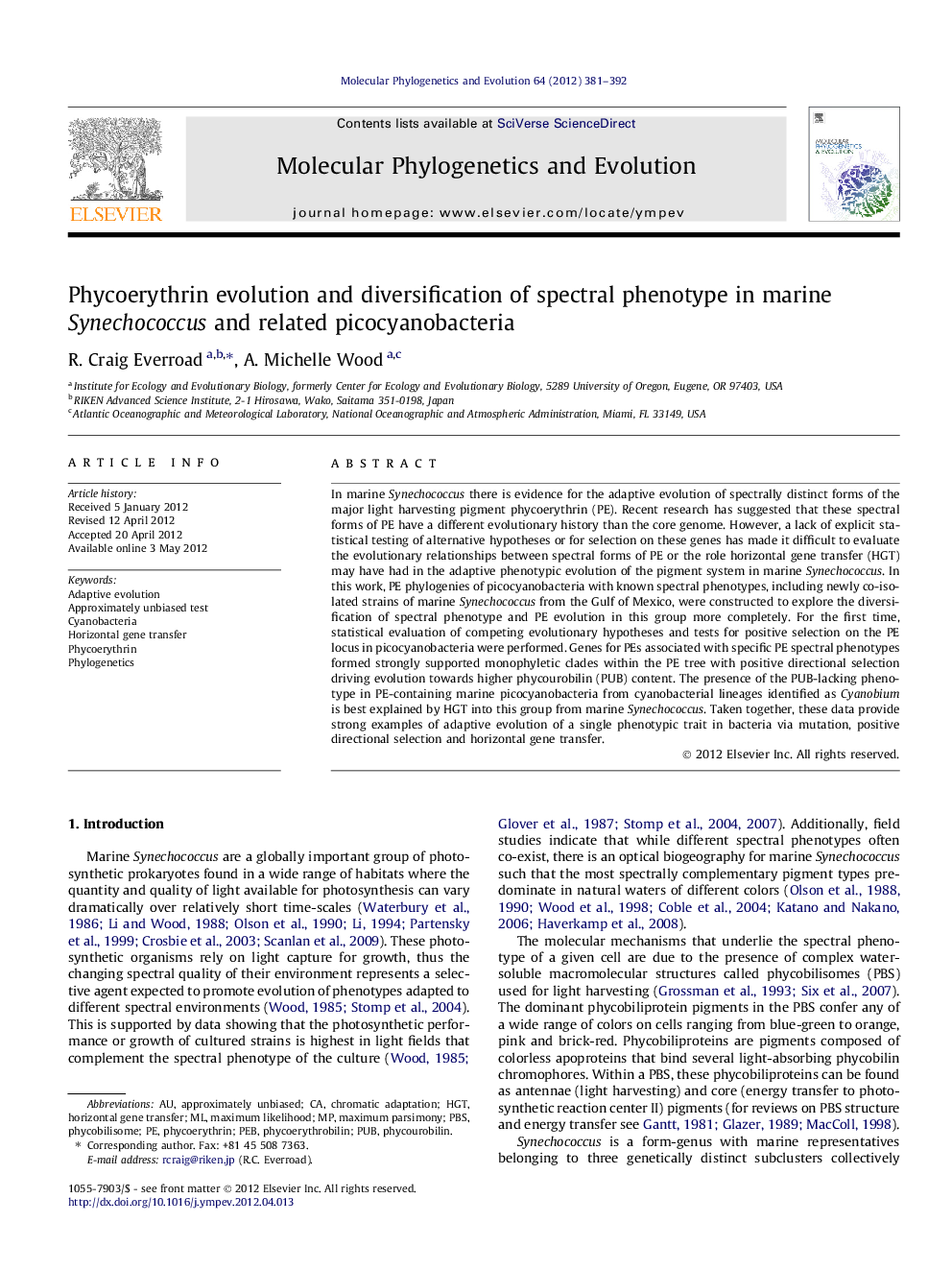| Article ID | Journal | Published Year | Pages | File Type |
|---|---|---|---|---|
| 2834091 | Molecular Phylogenetics and Evolution | 2012 | 12 Pages |
In marine Synechococcus there is evidence for the adaptive evolution of spectrally distinct forms of the major light harvesting pigment phycoerythrin (PE). Recent research has suggested that these spectral forms of PE have a different evolutionary history than the core genome. However, a lack of explicit statistical testing of alternative hypotheses or for selection on these genes has made it difficult to evaluate the evolutionary relationships between spectral forms of PE or the role horizontal gene transfer (HGT) may have had in the adaptive phenotypic evolution of the pigment system in marine Synechococcus. In this work, PE phylogenies of picocyanobacteria with known spectral phenotypes, including newly co-isolated strains of marine Synechococcus from the Gulf of Mexico, were constructed to explore the diversification of spectral phenotype and PE evolution in this group more completely. For the first time, statistical evaluation of competing evolutionary hypotheses and tests for positive selection on the PE locus in picocyanobacteria were performed. Genes for PEs associated with specific PE spectral phenotypes formed strongly supported monophyletic clades within the PE tree with positive directional selection driving evolution towards higher phycourobilin (PUB) content. The presence of the PUB-lacking phenotype in PE-containing marine picocyanobacteria from cyanobacterial lineages identified as Cyanobium is best explained by HGT into this group from marine Synechococcus. Taken together, these data provide strong examples of adaptive evolution of a single phenotypic trait in bacteria via mutation, positive directional selection and horizontal gene transfer.
Graphical abstractFigure optionsDownload full-size imageDownload as PowerPoint slideHighlights► First statistical tests of competing hypotheses of phycoerythrin evolution. ► Incongruence between phylogeny of 16S rRNA and phycoerythrin loci tested and supported statistically for the first time. ► Strains with distinct spectral phenotypes form monophyletic clusters based on pigment (phycoerythrin) genes. ► Directional selection in phycoerythrin evolution led to absorption of bluer light, an adaptive advantage for the open ocean. ► Likely HGT of phycoerythrin genes from marine Synechococcus into Cyanobium.
